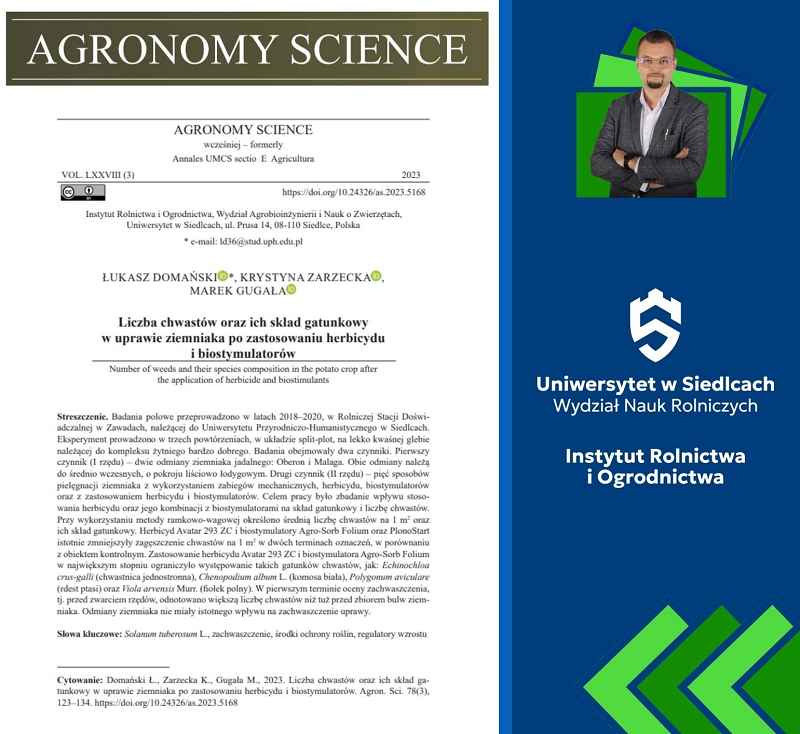
The scientific journal Agronomy Science, published by the University of Life Sciences in Lublin, has published a scientific article entitled The number of weeds and their species composition in potato cultivation after the application of herbicide and biostimulants, co-authored by M.Sc. Lukasz Domanski, a doctoral student of the UwS Doctoral School in the discipline of agriculture and horticulture.
The field research was carried out in 2018-2020, at the Agricultural Experimental Station in Zawady, belonging to the University of Natural Sciences and Humanities in Siedlce. The experiment was conducted in triplicate, in a split-plot arrangement, on slightly acidic soil belonging to the very good rye complex. The study included two factors. The first factor (first order) - two varieties of edible potato: Oberon and Malaga. Both varieties are medium-early, with a leaf-stalk habit. The second factor (second order) - five methods of potato cultivation with the use of mechanical treatments, herbicide, biostimulants and with the use of herbicide and biostimulants. The aim of the study was to examine the effect of herbicide application and its combination with biostimulants on the species composition and number of weeds. Using the frame-weight method, the average number of weeds per 1 m2 and their species composition were determined. The herbicide Avatar 293 ZC and the biostimulants Agro-Sorb Folium and PlonoStart significantly reduced the density of weeds per 1 sq. m. on the two determination dates, compared to the control plot. The application of Avatar 293 ZC herbicide and Agro-Sorb Folium biostimulant reduced to the greatest extent the occurrence of such weed species as: Echinochloa crus-galli (one-sided knapweed), Chenopodium album L. (white quackgrass), Polygonum aviculare (bird's-foot trefoil) and Viola arvensis Murr. (field violet). At the first date of weed evaluation, i.e. before the rows were short-circuited, a higher number of weeds was recorded than just before harvesting the potato tubers. Potato varieties had no significant effect on the weed infestation of the crop.


